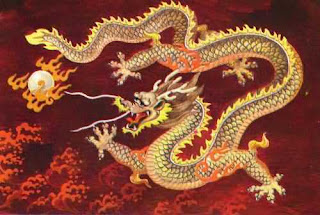August 10, 2009
Vietnamese Beliefs and Religions
Viet Nam is a country of many religions and beliefs. The Vietnamese people have a time-honored tradition of practicing their beliefs. Different ethnic groups in Viet Nam have different beliefs linked to their own material and spiritual lives.
1. Traditional beliefs:
- Prosperous Beliefs (Tín ngưỡng phồn thực): In the past, in order to maintain and develop the life, Vietnamese people had to rely on the agriculture (rice planting), the people were born and grown up. Prosperous beliefs are manifested by two ways: the cult of male and female sex organs and the cult of copulating act. It is different from India, which only worships the male sex organ.
You can many statues in My Son Sanctuary which show the cult of male and female sex organs or there is a festival which is on 6th January in Dong Ky (Bac Ninh), people procession male and female sex organs then burn them and give cinders to people in the village for the luck.
The cult of copulating act is shown in kettledrum which was found in Dao Thinh Village- Yen Bai Province.
The cult of copulating act:

- Worship of Nature (Tín ngưỡng sùng bái tự nhiên): Vietnamese worshiped a large number of gods, especially those related to agriculture such as the sun, the moon, land, mountain, river and forest, etc... for good luck. Vietnamese often worshiped 4 deities: Cloud- Rain- Thunder- Lightning. Besides, Vietnamese also worshiped many kinds of animals such as toad, buffalo, snake, crocodile… but the most common is Fairy Dragon (Rồng Tiên).
- Worship of People (Tín ngưỡng sùng bái con người)
Vietnamese practices the cult of ancestors which some persons would ascribe to Chinese cultural influences. In fact, the cult of ancestors has existed for a long time among the inhabitants of Vietnam. Chinese cultural influence has only given more emphasis to it. The cult of ancestors has been called “Đạo ông bà”, as a religion in Vietnam.
A communal house (Thành Hoàng) exists in every village of Northern and Central Vietnam. The community house is the place where the villagers gather to discuss their own problems and where the village genie is worshiped.
Hồn (Spirit) and Vía: Vietnamese has believed that a person has 2 parts: body and spirit. Vía is considered as a intermediary part between body and spirit. Vietnamese man has 3 hồn and 7 vía while a woman has 3 hồn and 9 vía. 7 vía are 2 ears, 2 eyes, 2 nostrils and the mouth but a woman has more two vía- 2 nipples.
Four Immortal Deities (Tứ Bất Tử): Tan Vien represents for the resistance of calamity and flood, Thanh Giong- the resistance of foreign invaders, Chu Dong Tu- the prosperity of things and Lieu Hanh- the prosperity of morality.
2. Vietnamese Religions: Viet Nam has a diverse mix of major religions with a large number of followers, religious figures, and monks such as Buddhism, Christianity and Muslim and some indigenous religions such as Caodaism and Hoa Hao…
- Buddhism: There are two sects of Buddhism: Mahayana and Theravada (Hinayana). Mahayana Buddhism was introduced in Viet Nam in the 2nd century B.C, and Theravada was introduced in Viet Nam in the 2nd century A.D. After the 10th century, Buddhism developed very quickly in Viet Nam and became the national religion under the Ly-Tran dynasty.
- Catholicism: Catholicism was introduced in Viet Nam in the 15th century by European missionaries. Catholicism was first popular in coastal provinces such as Thai Binh, Nam Dinh, Ninh Binh, Thanh Hoa and Nghe An, etc., then spread throughout the Red River delta and cities.
- Protestantism: Protestantism was introduced in Viet Nam in the late 19th and early 20th centuries. However, it was not until 1920 that Protestantism became popular all over the country. At present, there are one million Protestants and 500 Protestant churches in Viet Nam.
- Muslim: Muslim religion was introduced in Viet Nam by the Cham people in the 10th and 11th centuries.
- Caodaism (Đạo Cao Đài): Caodaism is an indigenous religion created in Tay Ninh province in 1926. Caodaism worships three Supreme Beings namely Buddha, Jesus Christ and Cao Dai God. The centre of Caodaism is Tay Ninh province.
- Hoa Hao (Đạo Hòa Hảo): Hoa Hao, also called Hoa Hao Buddhism, is another indigenous religion created in 1939 in Hoa Hao Village, Tan Chau District, An Giang Province.
References:
1. Book: Such is Vietnam, National Political Publishing House
2. Sites: www.wikipedia.com, www. vietnamembassy-cambodia.com


No Response to "Vietnamese Beliefs and Religions"
Leave A Reply